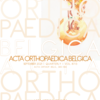Risk analysis of restrictive factors for fast-track hip arthroplasty - a retrospective study of 1138 patients
fast track program; hip arthroplasty; restrictive factors
Published online: Feb 16 2022
Abstract
Fast track programs have been introduced to reduce perioperative complication rates and to quickly reintegrate the patient into everyday life. The aim of this retrospective case-control study was to identify patient characteristics and patient-independent factors that influence fast track programs in hip arthroplasty. A total of 1138 patients were examined. A hospital stay of more than seven days was used to define the case group. In addition to the causes for the longer hospitalisation, age, sex, BMI, chronic nicotine and alcohol abuse, ASA score, surgical duration, anaemia and blood transfusion as well as concomitant diseases were assessed. The statistical analysis included two-sample t-test, chi-square test and logistic regression analyses. An 95% confidence interval was calculated (p<0.05). 16.9% of patients could not leave the hospital on the seventh day. The main causes were delayed wound healing (69.4%), increased CRP (43.0%>100 mg/l), and internal complications (19.7%). At a mean of 69.2 ± 10.7 years, the age of the case group was significantly higher than that of the control group, which had a mean of 63.3 ± 10.3 years (p<0.001). Cardiac comorbidities (p<0.001), BMI (p=0.023), and alcohol consumption (p<0.001) increased the risk for longer hospitalisation. Significant patient-independent factors were duration of the surgery (p<0.001) and transfusion (p<0.001). Successful application of fast-track hip arthroplasty is possible for every patient. However, longer hospi- talisation and delayed discharge must be taken into account for patients with advanced age, cardiac comorbidities, alcohol consumption, and high BMI.
